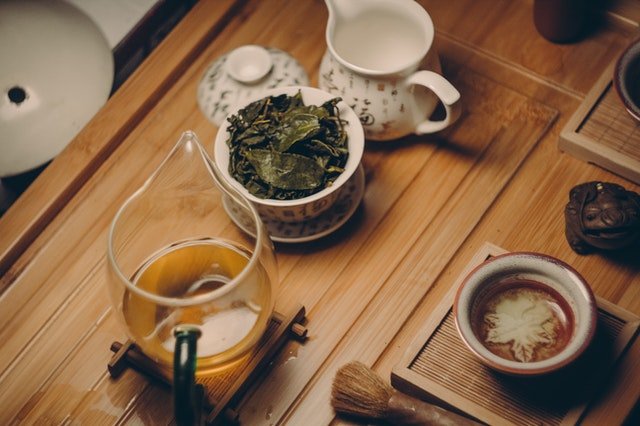
Surely, as a good tea lover, more than once you have wondered if tea can be used several times. Especially when drinking high-quality tea, it’s “shame” to get rid of the leaves. Now, what happens if it is infused more than once?
In some houses, reusing the tea bag is a daily and ingrained activity, especially among the elderly. Is this okay or does the tea lose properties? Keep in mind all your doubts because, then, we will answer them one by one.
Using the tea several times is it a good idea?
The answer to this question is difficult, at least in a general way, since it will depend on several factors such as the variety of tea, whether it is in bulk or in a bag, the temperature and the time of infusion.
The general answer to this question would be: yes, the tea can be used multiple times. There is no law that prohibits you from reusing the tea and, in fact, if you still like the taste, you can do it as many times as you want.
However, it is always more advisable to reuse tea leaves than bags.
Remember that the bags include a lot of dust and broken leaves, which is why the essential oils come out faster and, therefore, the successive infusions will have less and less flavor. Does this mean you should use a tea bag and throw it away? No, of course not, as we told you before: the decision is yours.
In the case of leaves, making a second, a third or even a fourth infusion is not crazy. In fact, it is common for Congou tea, for example, to be served continuously, always using the same leaves.
It is worth clarifying that each type of tea can vary in terms of the number of recommended infusions, the temperature of the water and the time of the infusion. Either way, as long as it’s still to your liking, nothing stops you from using the tea multiple times.
How to know how many times to infuse the tea?
Higher quality teas allow a greater number of infusion processes; In other words, those teas with whole and well-preserved leaves will give more play and will continue to provide a tasty liquor despite successive infusions.
Those teas of more moderate quality, such as bag teas, can allow re-infusions but, surely, you will notice that the flavor is much milder. This is also due to the fact that when preparing tea bags, we generally use boiling water and, therefore, the first infusion is much stronger than the following ones.
Brew times to use the tea multiple times
Experts disagree on the best way to perform the second infusion. In fact, there is quite a bit of controversy about it.
One group often recommends short infusions when planning to reuse the leaves. Thus, the first infusion should be between 30 seconds and 1 and a half minutes, depending on the type of tea.
For a second infusion, the tea should be left to steep for an additional 30 seconds. Thus, if for the first cup the tea was infused for one minute, the second cup would need a minute and a half. In the case of the following, 30 seconds would also be added each time.
The other maintains that the best way is to make increasingly shorter infusions but with a higher water temperature. In this case, if we prepare a black tea with a rest of 4 minutes at a temperature of 95 ºC, the second cup should be infused for 3 minutes at a temperature of 100 ºC and the third, only 2 minutes.
What varieties of tea can be reinfused?
Which you want! Do not forget that in Chinese and Japanese culture, using tea several times is very common.
The oolong, for example, are among those that best respond to the reinfusion technique and with each cup you will be able to perceive new nuances in the mouth. Did you know that this technique could be carried out until the leaves are completely open (after 4 or 5 infusions)?
As we already pointed out, the Congou is another good option. And what about green, black, red, yellow and white tea ?
Of course you can use the leaves more than once, especially if it is quality tea. Although it may seem strange to you, the reinfusion allows you to appreciate new nuances of tea, so go ahead!
How to reinfuse each tea
Below, we give you some basic guidelines on how to do the reinfusion according to the variety of leaf tea.
In the case of green and white tea, the ideal is to make a first infusion as usual and then reduce the time of the following ones but slightly increase the temperature. It’s worth noting that while green tea can handle multiple re-infusions, white usually works well for two infusions.
For oolong teas, it is advisable to start with short infusions and increase the time in successive ones. The same goes for pu-erh, yellow tea, and black tea. In any case, they should not exceed 5 minutes of rest.
Does the tea lose properties when infused several times?

It is not the first time that we talk about the properties of tea. As you well know, teas are rich in polyphenols, substances with antioxidant potential, and contain caffeine. What happens to these components when the leaves are soaked in water multiple times?
If we talk specifically about caffeine, it is believed that the highest concentration of it would appear in the first infusion, disappearing almost completely on the third. However, one study indicated that if water at a lower temperature was used, the release of caffeine would be more progressive and, therefore, would last longer than one or two infusions.
Regarding catechins, the data are not conclusive. It is estimated that the first rest of the leaves extracts the largest amount of essential oils and, with it, beneficial substances for the body, but this theory has not been scientifically proven to date.
In conclusion, be guided by your palate! If you like the tea even though you’ve re-infused it three or four times, who’s to stop you? Drinking tea is an experience that should be pleasurable and if you still find tea pleasant, go for it.
